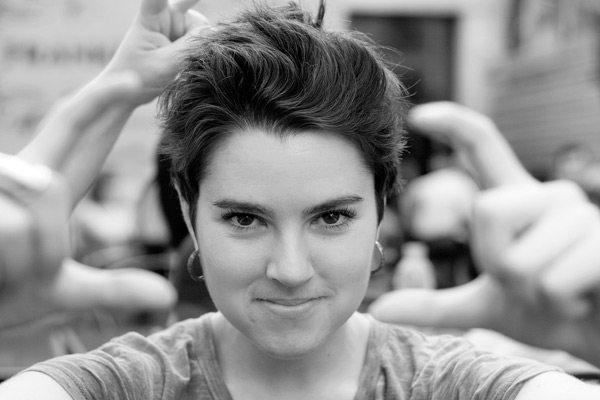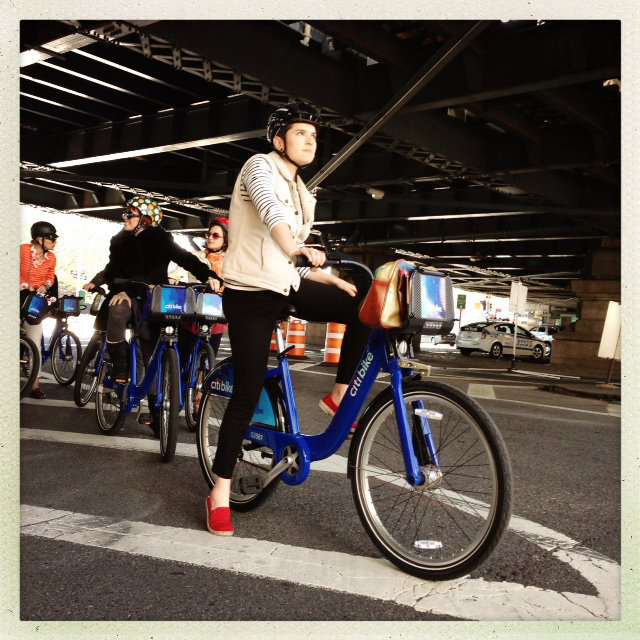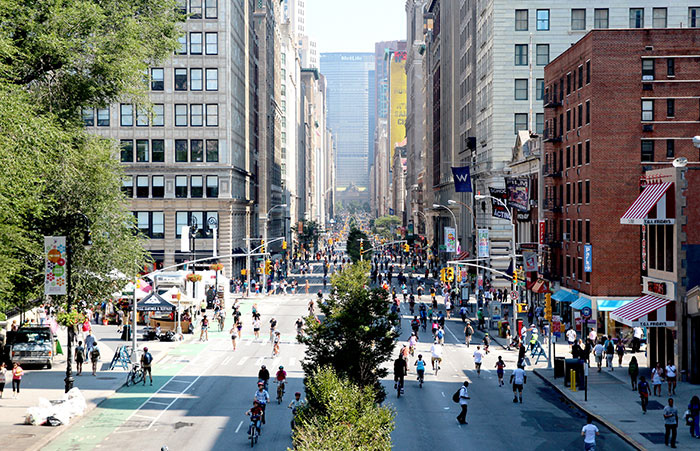Autumn Gear Guide
Find inspiration in our Gear Guide that will keep you out on your bike through wind or rain.
Download Now

Dani Simons discusses bringing bikeshare and public biking events to the streets of New York.

Photo by Jesse Chan-Norris
This story was originally published on Urbanful on April 22, 2015.
From everyone’s favorite upcycled park, The High Line, to ambitious urban farming projects like Brooklyn Grange (a 43,000-square foot, rooftop farm in Long Island City), there are plenty of reasons to feel hopeful about the city’s future.
Dani Simons is one of them. One of the major forces behind two projects that have helped New Yorkers fall in love with their city again – Citi Bike and Summer Streets – Simons is on a mission to spark city dwellers’ interest in sustainability issues by immersing them in the city through programs and experiences that seem far-removed from the kinds of policy wonkiness that takes up much of her own days.
Urbanful spoke with Simons about her influences and inspiration, and her long-term vision for a sustainable New York City.
Was there an experience that catalyzed your energy around sustainable transportation?
My first job out of college was as an AmeriCorps/VISTA member, working on the Woonasquatucket River Greenway. We were restoring parks and preparing a greenway to be built that ran through some of the most impoverished neighborhoods in Providence, RI. I loved that the project had so many different facets. It was about social justice, bringing high quality parks back to neighborhoods that had been sorely neglected. It was about public health, giving people safe, high-quality spaces in which to get physical activity. It was also about economic development and transportation – linking these neighborhoods to jobs in downtown Providence, an easy bike ride away.
What’s your role in Citi Bike?
I came on board a few months before the program launched as the Director of Marketing and External Affairs. I (in partnership with my colleagues at the NYC Department of Transportation) handled community concerns as we deployed stations and managed staff who did outreach in advance of station deployment. I am also responsible for our website, social media, marketing and membership sales.

Photo by Dani Simons
What are the biggest challenges with respect to influencing and evolving the thinking about and culture of sustainable transportation in NYC?
We compete for very scare amounts of space. What we call apartments, people in D.C. or Boston would call closets. When we carve out room for people on bikes or new plazas for people on foot, it’s taking away space from someone who perceived that space as theirs. And since most of us don’t have lawns or backyards, when you make changes in the streets it feels personal, like someone came and put up pink flamingos while you were out.
There’s also a generation of people here who still remember the subways as horrible, dirty, crime-ridden places. For them, getting enough money to opt out of that – to drive cars or take taxis – was a huge accomplishment. That generation is skeptical of a generation that wants better transit [and] more space for walking and bicycling. Unfortunately, a lot of these folks are still in decision-making roles.
What cities inspire you with their urban planning and sustainable transport?
I love Copenhagen and how easy and natural it feels to ride a bike there. It feels as easy as taking a walk, which is really my dream for all cities.
I think Mexico City has done amazing work on their Bus Rapid Transit system and their public plazas. They’ve also started to make some good improvements for bicycling. It’s amazing to see how much that city has changed in the past ten years.
How does Summer Streets fit into the idea of urban engagement and sustainability?
Summer Streets, and other Open Streets events like it, provides a way to engage constituents in a conversation about urban planning and public policy. It allows them to temporarily experience the effects of policy change and provides opportunities to make the desire for these changes visible to a huge audience (through media coverage and savvy social media documentation of events). People show up who maybe would not ordinarily attend a town hall meeting on the topic; if you are strategic, you can turn these folks into supporters for the policy changes you are trying to affect.

Photo courtesy of NYC Dot
How did Summer Streets evolve?
Many advocates had dreamed of bringing an event like Bogotá’s “Ciclovía” to New York. In 2007, Streetfilms went to Bogotá and made a video of the event. Then, New York City got a new transportation Commissioner, Janette Sadik-Khan, who wanted to rethink the way New York’s streets were being used, improve them as quality public space, and make sure they were safe and comfortable for everyone, not just motorists. She contracted with Jan Gehl Architects to help the Department of Transportation think about a public space strategy. And Gehl came in and said you need some temporary events to build excitement leading up to the permanent projects you’re working towards, like the pedestrianization of Times and Herald Squares.
We had to convince City Hall that it wasn’t entirely insane to close down nearly seven miles of city streets for three Saturdays in a row. Now it’s a well-loved event that New Yorkers look forward to. Each summer we (and I include my successors at DOT in this “we”) have figured out a way to bring something new and fresh to it to continue to attract new visitors, from Dumpster Pools to zip lining above lower Manhattan to the Park Avenue Tunnel art installation last year.
What’s the next big issue you want to tackle?
Short-term, I would love to be part of expanding Citi Bike to new neighborhoods. There is such massive demand. We’re really still at the very beginning with what bike share can do for New Yorkers.
Longer-term, I’d be fascinated to take what I am learning and bring some of that customer-orientation and nimbleness to a bigger public transportation agency. New York’s MTA has made some big strides, but there’s still a long way to go. And L.A.’s Metro is fascinating in its marketing, branding and customer engagement.
What are you most proud of to date?
I am most proud of being part of the team to launch the largest bike share system in North America. I played a small role in what was a very long process to bring this idea to life, but it’s an amazing thing that one day I’ll be able to tell the grandkids about.
What’s your philosophy of ideal urban living?
The compactness of urban living makes it even more important to honor some fundamentals like “Do unto others as you would have others do to you.” Get to know your neighbors. Do something – it doesn’t have to be a big thing – to make your city a better place to live.
 Urbanful is a digital magazine and marketplace celebrating city living. From hacking your commute to bringing you the latest city trends, we’re all about those things that make city living great. Read more at Urbanful.org.
Urbanful is a digital magazine and marketplace celebrating city living. From hacking your commute to bringing you the latest city trends, we’re all about those things that make city living great. Read more at Urbanful.org.
Find inspiration in our Gear Guide that will keep you out on your bike through wind or rain.
Download Now
Leave a comment